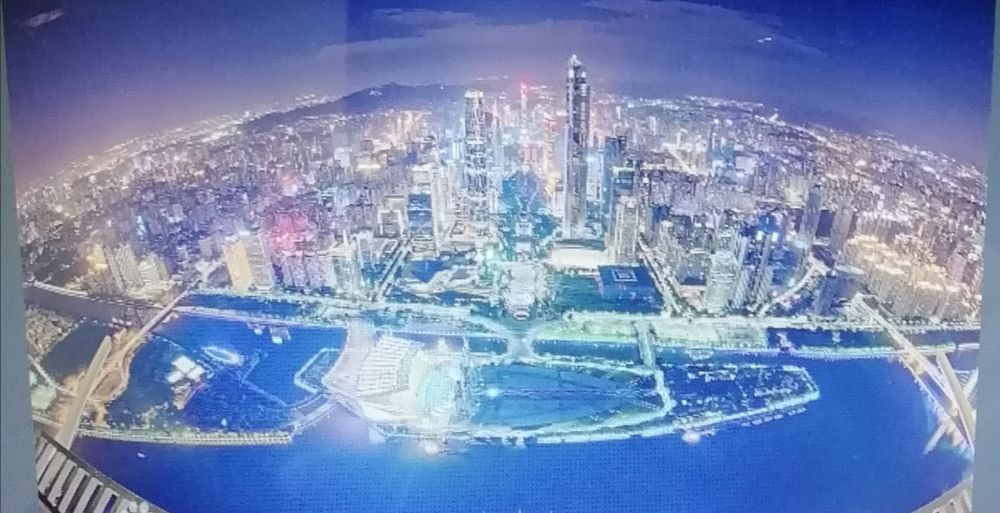辛泰浩
海纳百川,取他人长高求成长;刚自无欲,走自已道尔符正道。
知之者不如好之者;好之者不如乐之者。
疫情反思“城市化”
“天人感应”,古人认为天能影响人事、预示灾祥,人的行为也能感应上天。
“凡存心养性之理,穷神知化之方,天人感应之机,治忽存亡之候,莫不毕书之”
一个国家、一个朝代造孽太多往往受到上天的惩罚,人们的善举往往会感动上苍。自然灾害和瘟疫都是大自然对人类行为的一次“大消毒”,以提高大自然本身的“免疫力”。
千百年来人类社会没有极限的开发的时候,也很少奇疾怪病。
当今社会越是现代化,自然灾害、流行感冒、病毒感染就会越来越多。
到了本世纪世界各地除了强台风、强地震不断袭击全球,各种看不见的、令人毛骨悚然的疾病蔓延。
2002年~03的萨斯(SARS),
2009年的猪流感(HINI型流感)
2012年的中东呼吸器症候群(MERS),
2014年至2016年的埃博拉出血热,
2015年的吉卡热,
2016年的登革热,
2019年至今蔓延全世界的COVID—19(新冠病毒肺炎)
频繁的病毒传染病发无疑是大自然对提出人类的严重警告。
这样连续的人类自然灾难可以说与包括中国在内的“城市化”发展迅猛尽头不无关系, 就像有上世纪五十年代的“大跃进”后的自然灾害一样,受到“惩罚”的总是那些平民百姓。
2003年城市化水平已达到40.5%。太快,太急的城市化让国民受到了不必要的元气损伤。
英国的城市化从26%提高到70%用了90多年的时间,法国从25.5%到71.7%、美国从25.7%到75.2%都用了120年的时间,中国从1993年的28%到2003年的40.5%仅仅用了10年时间。如果按照这样的速度,理论上2020年达到60%,2035年达到75%左右,就是说,中国用英国的一半时间,用法国和美国的三分之一的时间就能完成同一个城市化的进程。
然而要知道中国是一个农业国,工业底子不是很厚,“揠苗助长”拔高的手段往往是与人的愿望相违背的后果。中国是一个14亿人口的国家,比北美、欧洲加日本的人口总之和还多。要与发达国家的城市化硬拼,无疑要牺牲许多自然环境。中国的土地资源贫乏,960万平方公里的土地,在现阶段的科学条件下,不适应人类居住的高原、大山、沙漠、戈壁滩和干旱地区占去三分之二,可利用的国土承受目前的人口数量已经超负荷,条件比任何发达国家都差,基本资源严重短缺,人均淡水不到世界的四分之一、人均耕地不到世界的三分之一。如果60%的城市化,15亿人口中9亿人居住在城市里,淡水、土地、能源、食物、住房及交通设施都会“爆胎”!
现在的一些发达国家,倒是城市化的“逆行者”,由大城市向小城市,由城市中心向郊区分散化的倾向。先进国家的城市化是经过长期的经济生长而逐步进化的结果,而中国的城市化是按照“计划经济”的模式人为地、非循序渐进的、一刀切的方式进行的。在人口布局,资源配置,环境自然,社会形态等各方面非常复杂的因素比单个产品、单项指标要复杂N次立方的倍数。
过速的城市化的结果可能导致许多无法逆转和难以纠正的弊病。
如:大量的耕地非正常减少,严重的“城市病”(人口大量集中后的失业率增加、淡水和能源紧张、交通拥挤、犯罪增加、环境恶化……),房地产“泡沫化”,城市的“废墟化”……。
人类的生存环境是多样的,人类的生存资源是必不可少的,人类的需求也是多方面的。人来到这个世界,他的衣,食,住,行缺一不可,他的吃,喝,拉,撒必不可少。大量的人口涌进城市,使本来很脆弱的城市功能“雪上加霜”,只能在繁重的压力下,超“负荷”的运转,来满足日益增长的人口需要。尤其是人类的生存资源,一旦供应短缺,每个人都要面临生存危机,势必造成人心慌乱,给社会带来不安定的因素。
只有尊重自然而不是破坏自然,只有循序渐进而不是破天荒地与自然为敌,顺应自然一个大国的航母在前进途中才能避开“暗礁 ”,乘风破浪,一路远行。

Recently, there have been continuous reports of rapid development of urbanization in China, saying that the level of urbanization in 2003 has reached 40.5%, which is higher than the original planned target, and that China's cities have entered the "accelerated development period", and even some reports say that there is a "great leap forward" of urbanization at present. Is it a good thing to build momentum and promote the process of urbanization? Is there any negative effect?
According to the original plan, China's urbanization level will reach about 35% by 2005 and 40-42% by 2010. In other words, China has achieved the original goal of urbanization six to seven years ahead of schedule. Authorities have proposed that the level of urbanization in China should reach 65% in the middle of this century, and then reach 75%.
It took 90 years for the urbanization level of Britain to rise from 26% to 70%, France from 25.5% to 71.7%, and the United States from 25.7% to 75.2%, all of which took 120 years. However, it will take only 10 years for us to increase from 28% in 1993 to 40.5% in 2003. Let alone accelerate, that is to say, with such a speed, we can reach 60% in 2020 and 75% before 2035. In other words, we only spend half of our time in Britain, almost a third of our time in France and the United States, going through the same urbanization process.
The particularity of China is very distinct. First, the population is too large. 1.3 billion people, more than the total population of North America, Europe and Japan; second, the available land resources are relatively poor. Although China has a land area of 9.6 million square kilometers, more than two-thirds of the Highlands, mountains, deserts, Gobi and arid areas that are not available and suitable for human habitation under scientific conditions now account for. The available land has borne a heavy burden on the current population, which is worse than any developed country. Third, there is a serious shortage of basic resources, such as light per capita Less than a quarter of the world's water and less than a third of the per capita cultivated land. Compared with developed countries, this is far worse. In view of the fact that the consumption of resources by urban population is far greater than that of rural population of the same amount, when we implement urbanization, we must fully consider whether the basic resources of our country are suitable for the reasonable distribution proportion of urban and rural population. Since China's basic resources are far inferior to those of developed countries, why should our urbanization level be as high as theirs? If we have 1.5 billion people in 2020, 60% of the urban population will be 900 million; in this century, 1.7 billion people, 75% of the urban population will be 1.275 billion. How much fresh water, how much land, how much energy, how much food, how much housing and how many transportation facilities are needed to support such a huge urban population?
生物圈
减少生物多样性
岩石圈
导致耕地面积减少,土壤污染,地面下沉
大气圈
空气污染。加剧热岛效应和温室效应
水圈
下渗减少,地表径流增多;水质恶化;水资源短缺;酸雨
交通
交通拥挤
住房
住房紧张
就业
就业困难
社会秩序
社会秩序混乱(高犯罪率)
道德风气
道德风气日下
社保
社会保障压力快速加压,社保缺口难于填补。
珠江三角洲模式:对外开放——外资企业建立——工业化——城市化
浙江温州模式:小商品经营——个体私营企业—— 工业化——城市化
苏南模式:大城市扩散——乡镇企业——工业化——城市化
东北模式:森林、矿产资源开发——国有大中型企业建立——工业化——城市化
发达国家
1.起步早。
2.城市化水平高。
3.出现逆城市化现象。
发展中国家
1.起步晚,发展快。
2.城市化水平较低。
3.城市发展不合理。
例如巴西,城市人口占全国人口的3/4,城市化问题十分严重。




